Got a
passion for purple, a yen for yellow, or an obsession for orange? Explore
your favorite color and get inspired!

Corydalis flexuosa 'Blue Panda'
The first of the coveted blue corydalises to be introduced,
it produces fragrant clusters of long-spurred, azure flowers on a compact
plant.
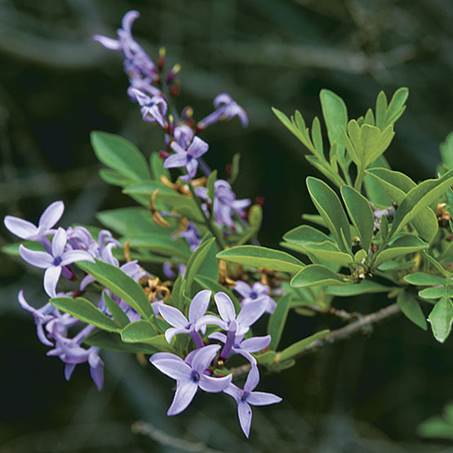
Cut-leaf lilac
This graceful hybrid produces fragrant, pale lilac flower
clusters up to 4 inches long in late spring. The difference
this lilac offers is its airy, finely textured foliage. It forms a
spreading shrub 6 feet to 8 feet tall and wide.
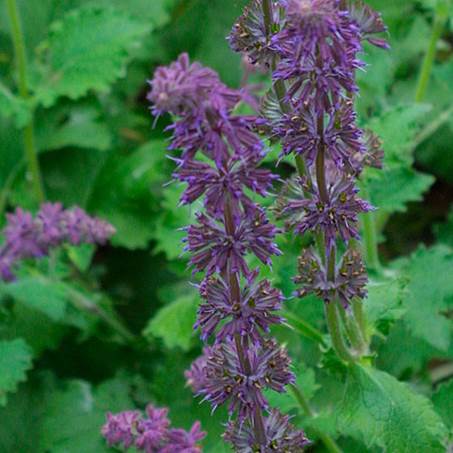
Lilac sage
Throughout the summer, this cultivar produces multiple
flower spikes in irresistible shades of smoky purple. At about 20 inches
tall and half as wide, the plant flowers abundantly, inviting you to make
bouquets and to keep up with the deadheading.
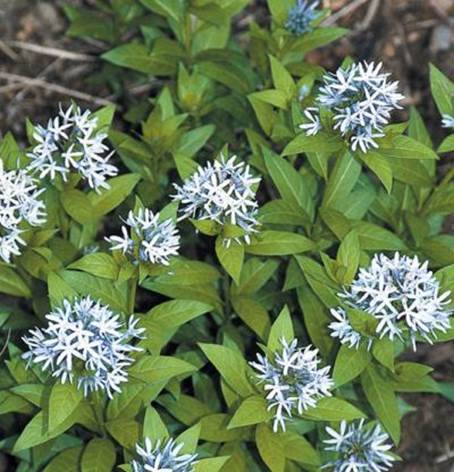
Dwarf blue star
Chalk up another great plant introduction from the folks at
Plant Delights Nursery in Raleigh, North Carolina. This dwarf blue star grows
to only about half the size of the species, making it well suited for gardens
with limited space. It performs best in full to partial sun and is appreciative
of moist, well-drained soil. The sky blue flowers appear in early spring above
the clean, dark green foliage. Try planting 'Short Stack' in a mess and along
bed edges for a winning display.
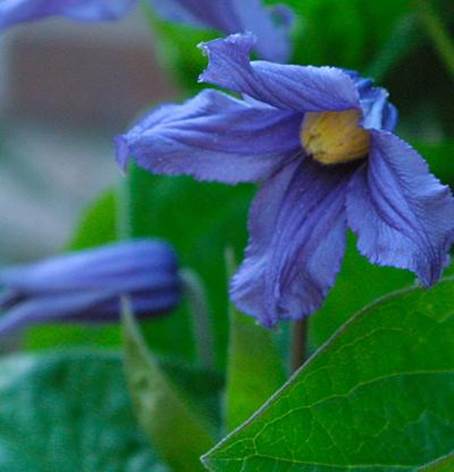
Solitary clematis
Clematis integrifolia is a herbaceous, woody-based, upright,
non-climbing perennial with a dense and somewhat sprawling habit. It bears
solitary, nodding, bell-shaped flowers with slightly twisted violet to blue
sepals and creamy white anthers from May to July. Sporadic blooming sometimes
occurs throughout the summer. Blossoms mature to attractive, feathery,
silver-green, or silvery brown seed heads.

Pasque flower
Pasque flower blooms for 4 to 6 weeks in spring with fuzzy
flower buds that open to 1.5-inch-wide purple flowers that dance in the breeze.
Fuzzy, feathery seedheads take up the dance when the blooms end. By then, the
felted leaves have pushed up to produce a lacy gray-green backdrop.
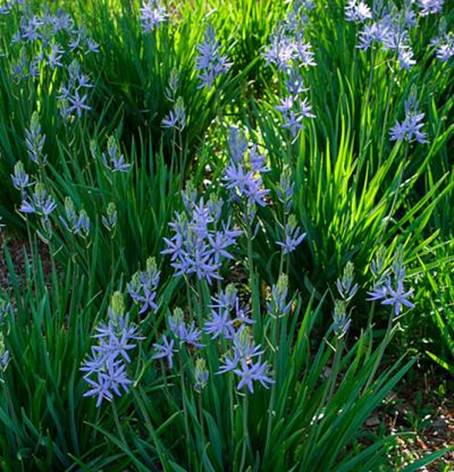
Camassia leichtlinii ssp.suksdorfii 'Blue Danube'
Spikes of violet, star-shaped flowers top stems reaching
from 2 to 4 feet in late spring. The species is native to western Oregon. 'Blue
Danube' would be beautiful in a border, meadow, or containers. Camassia make
good cut flowers.
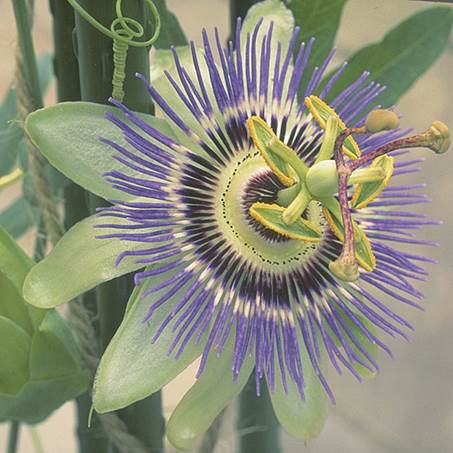
Blue passion flower
This plant produces 3- to 4-inch-diameter, slightly scented
flowers sporadically during summer, increasing in late summer through autumn.
Intricate blossoms have an outer ruffle of petals and sepals; an inner disc of
filaments composed of rings of blue, white and purple; and a central
“antenna.” Deeply lobed dark green leaves cover stems that grasp supports
with tendrils. Blue passion flower can reach 10 feet tall in one season. The
ovoid, orange-yellow fruit is edible.
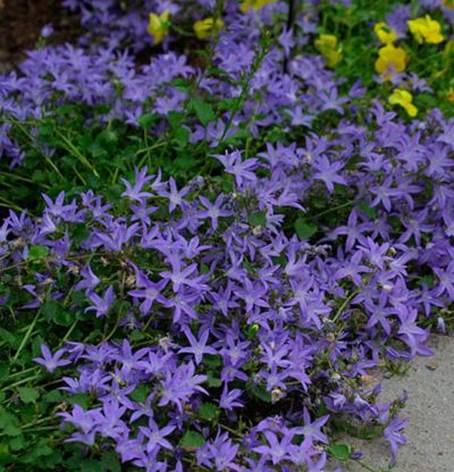
Serbian bellflower
Serbian bellflowers have an easy, undemanding habit.
Creating a stream of lavender blue, the 1-inch-diameter star-shaped blossoms
bloom reliably from late spring to early fall. The foliage remains evergreen in
mild winters and needs to be sheared only once in a while to keep its
appearance tidy. 'Blue Waterfall' flows beautifully along bed edges and through
rock gardens in full sun to partial shade
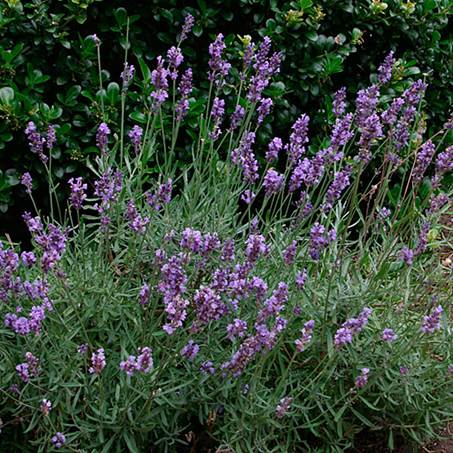
English lavender
English lavender has silvery gray, aromatic foliage topped
in summer with lavender-blue to dark purple flowers on long stems.
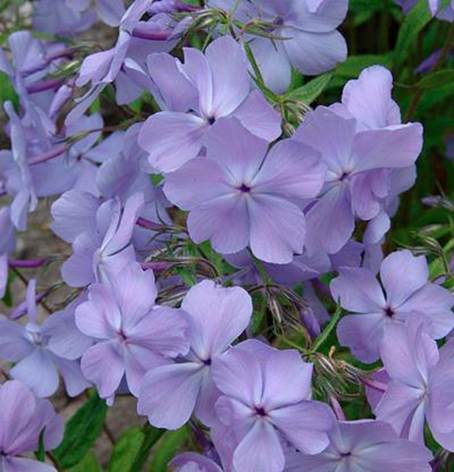
Blue phlox
This cultivar of the popular blue phlox has round, full
flowers with overlapping petals. It is noteworthy for
its particularly rich blue-violet color. Use it in rock gardens or
alpine houses, in a dry wall, or as edging.

Plantain lily
'June' hosta has bluish leaves with irregularly
shaped creamy gold centers. Pale lavender flowers bloom in late
summer on 20-inch spikes. This medium-sized plant is a standout in shade or
woodland gardens. It was the American Hosta Growers Association
"Hosta of the Year 2001".
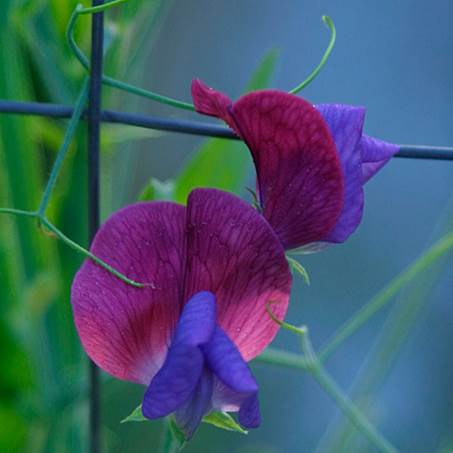
Sweet pea
This annual climber has winged stems and deliciously
fragrant, ruffled blossoms. Many cultivars exist with varying bloom color
(solid, mixed, or bicolor), size, and climbing habit.
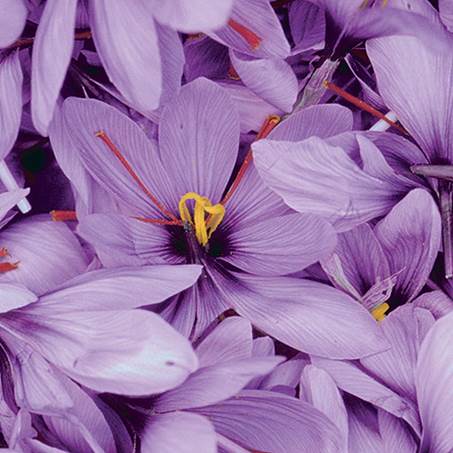
Saffron crocus
The saffron crocus blooms in the autumn, producing 1 to 5
rich lilac flowers with dark purple veins, held wide open above inconspicuous
foliage.
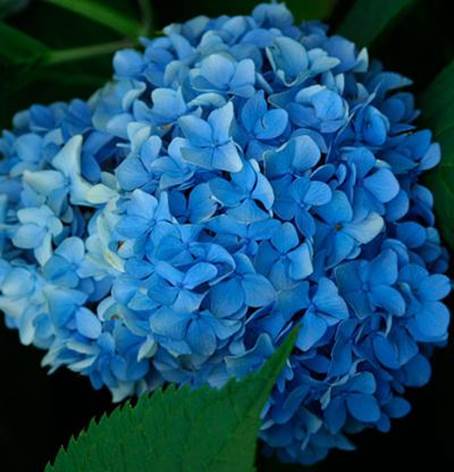
Bigleaf hydrangea
This is a well-loved and vigorous cultivar with large,
rounded flower heads of a rich, gorgeous blue.

Blue beard
'Worcester Gold' is an attractive, mounding, woody shrub
with warm yellow to chartreuse foliage and lavender-blue flowers in late
summer and early autumn. The flowers are fragrant and attractive to bees and
butterflies. The foliage is also aromatic. It is ideal for a mixed or shrub
border.

Shrubby cinquefoil
This clumping, bushy perennial bears clusters
of single, extremely vibrant red flowers all summer. The saucer-shaped flowers
often attract butterflies. 'Gibson's Scarlet' is very hardy and
tolerant of most soils.

Pelargonium 'Crystal Palace Gem'
'Crystal Palace Gem' was first introduced in 1869 and
has been a star in the garden ever since. It was named for Joseph Paxton's
elaborate glass house designed in 1851 for London's Great Exhibition in Hyde
Park. Like its namesake, the plant is showy, with its round chartreuse leaves
with a midgreen center and its salmon-red flowers. 'Crystal Palace Gem' looks
good from spring until frost. -
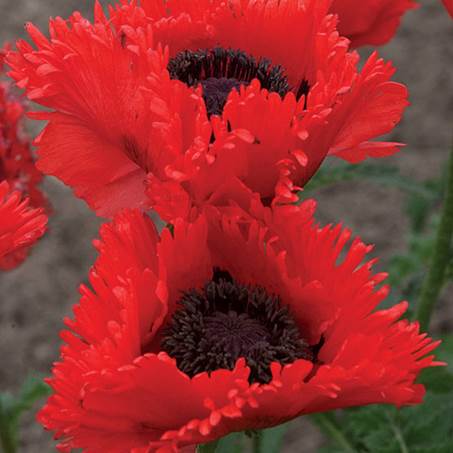
Poppy
The 4- to 6-inch-wide blooms of 'Flamenco Dancer' poppy
stand out in late spring and early summer with their true red color and
fanciful fringes. It is a sport of the popular 'Turkenlouis'. After the
flowers fade, this perennial will go dormant, so plant it near neighbors that
will fill the vacancy.
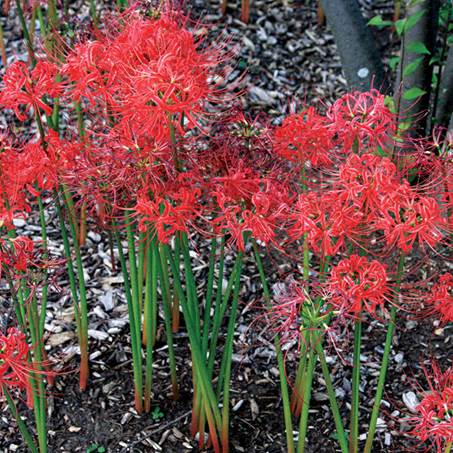
Red spider lily
Red spider lily’s brilliant red flowers remind me of an azalea’s
ball truss. Blooms fade quickly in hot weather, but a higher degree of shade
helps them last a while longer. Depending on where it grows in the Southeast,
red spider lily blooms from early September to mid-October. After the bloom
stalks fade away, foot-long, strap-shaped leaves emerge and last through
winter. Red spider lily is an heirloom bulb that is easily passed from hand to
hand. Replant offsets as the leaves die in spring.
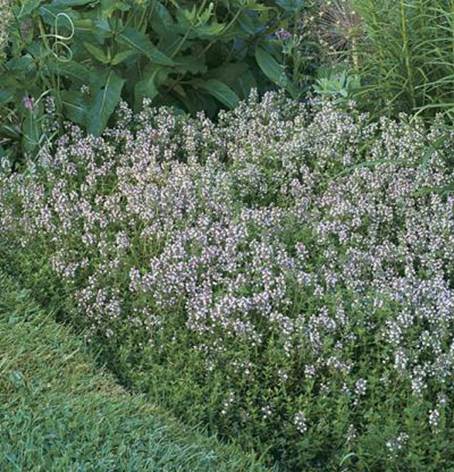
Thyme
In early- to mid-summer, this mat-forming thyme erupts with
masses of 6-inch-high spikes covered with pink flowers. The light green, tiny
foliage, hugging the ground in mats, has a pleasing lemon fragrance when
crushed. This plant shines when spilling over stone walls or between the cracks
in paving stones, where passersby can tread on the leaves and release the
lemony scent.
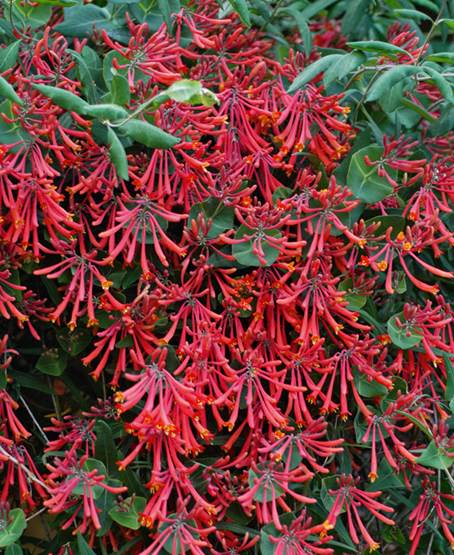
'Major Wheeler' honeysuckle vine
This remarkably-versatile vine will climb your highest
trellis or create a carpet of red splendor on your garden floor. Wherever
planted, Major Wheeler’s showy blooms are a magnet for hummingbirds and
butterflies.
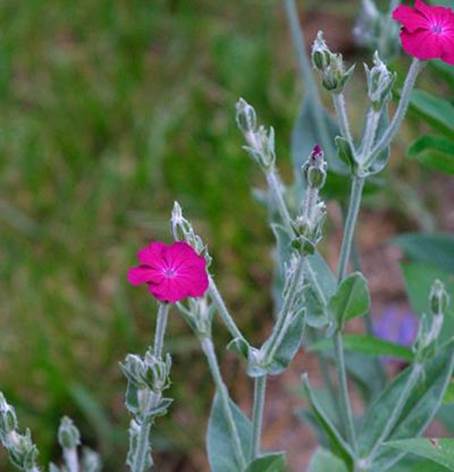
Rose campion
Gray-green, spear-shaped leaves form a low, tidy, circular
mound about 1 foot in diameter. This plant puts on a dazzling show of
five-petaled magenta flowers on straight stalks about 2 feet high in mid-spring.
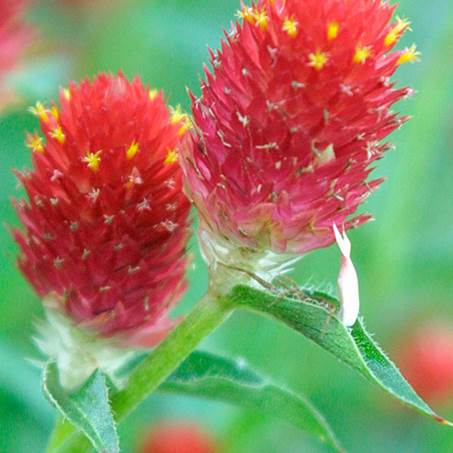
Gomphrena
An upright, bushy annual with flowers (actually bracts)
that resemble bright red strawberries with tiny yellow
"seeds." Flowers are produced from summer to early fall and are great
for cutting and drying. Leaves are hairy. Gomphrena is fairly drought tolerant
and very heat tolerant. Use as bedding, in a border, or in a cut flower garden.
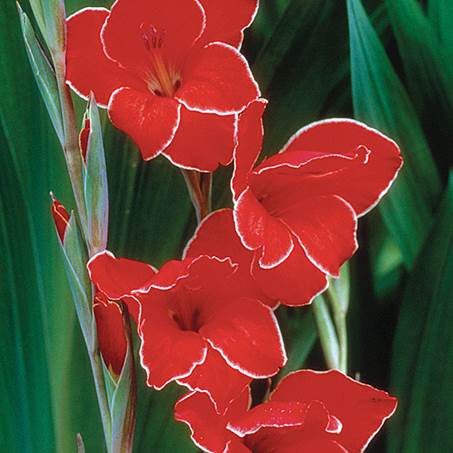
Gladiolus
A glad for people who would normally never grow them, 'Atom'
is about half the size of regular varieties, growing to at most 3 feet
tall. This 1946 classic blends easily into perennial borders, and it won't get
lost because its flowers are blazing red cooled by a thin, silvery edge.
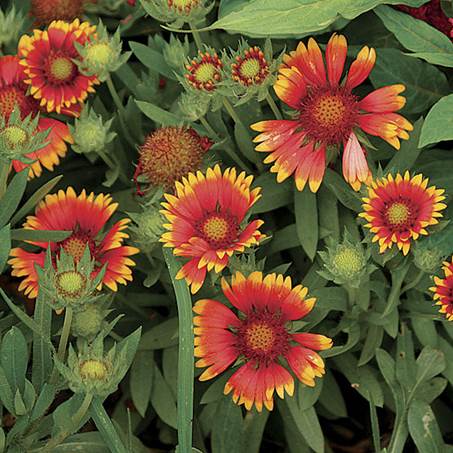
Blanket flower
This 2005 All-America Selections® winner is a cultivar
of a native blanket flower. It covers itself in large reddish flowers with
yellow edges up to a month earlier than other gaillardia. Growing to just about
a foot tall and wide, it is beautiful at the front of a border.
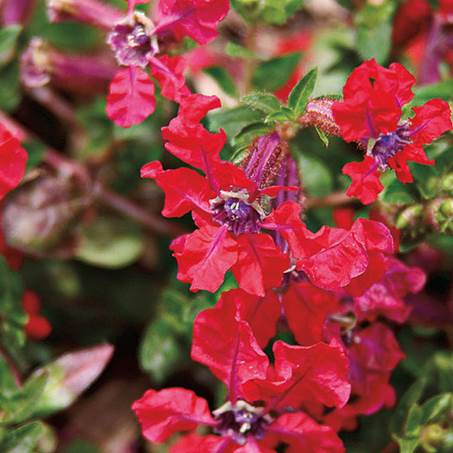
Totally Tempted™ cuphea
Totally Tempted™ cuphea has nonstop, bright red summer
flowers that don't need deadheading. It doesn't mind summer heat and has a more
compact habit than most cultivars in this species, growing to just a foot tall
and a little wider.

Bleeding heart
A garden favorite for many years, bleeding heart has soft
green foliage and 1-inch-long rose pink and white heart-shaped flowers for
several weeks in spring. Plants can form clumps 3 feet across and almost as
tall. Foliage generally goes dormant in summer, so be sure to choose companion
plants carefully so there isn't an empty space left in the garden. Beautiful
in a border or woodland garden.
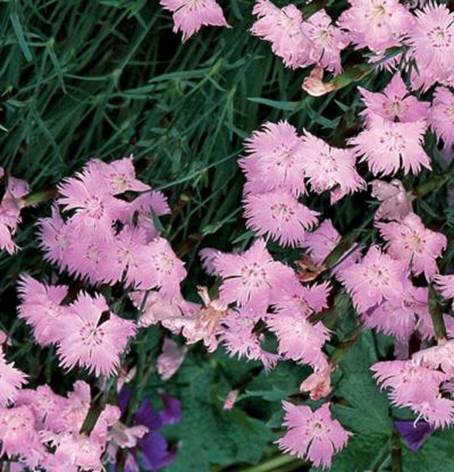
Cheddar pink
Dianthus 'Bath's Pink' is a stunning, wide-spreading ground
cover with grassy, blue-green foliage and pink flowers. Use it to edge a
bed or grow it in your rock garden for a splash of cool color. To keep its
blooms going, be sure to deadhead.
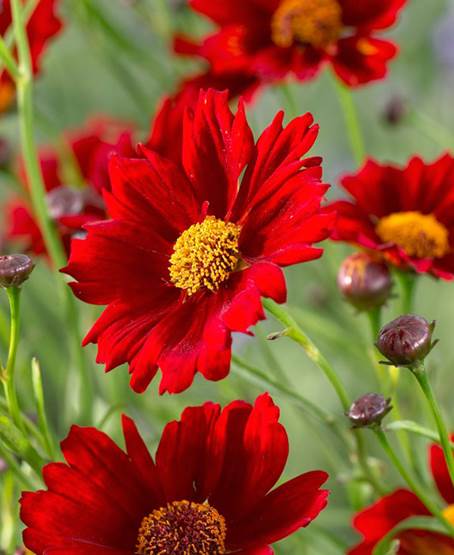
'Mercury Rising' coreopsis
Large, velvety-red blooms bring long-lasting, dramatic color
to the garden from early summer into fall. This easy-to-grow beauty is deer
resistant and perfect cut for summer bouquets!
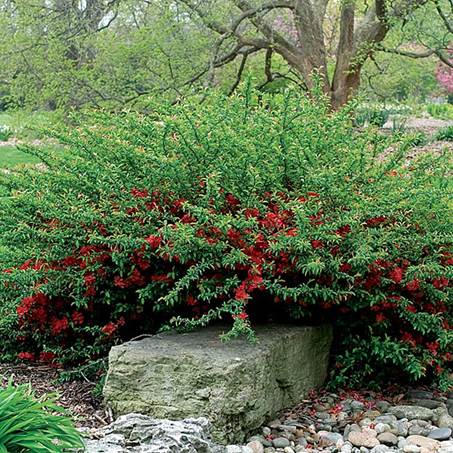
Flowering quince
One look at ‘Texas Scarlet’ flowering quince in bloom and
most gardeners are instantly sold. Though the display only lasts a week or two
in early spring, the sight of the tomato-red flowers is unforgettable. During
the rest of the season, ‘Texas Scarlet’ remains a wave of glossy green leaves
that reaches 2 to 3 feet tall in the toughest of conditions.

Redbud
This impressive tree, also known as 'Covey', takes the
beautiful deep pink spring blossoms and attractive deciduous foliage of our
native redbud and displays them on its weeping form. Lavender Twist® reaches 6
to 8 feet tall and 8 to 10 feet wide and makes a great specimen plant near
walkways, foundation plantings, or patios.

Canna 'Erebus'
Each of this plant's stunning lance-shaped leaves
is the softest gray-green, edged subtly with a cream-colored pinstripe. These
luminous 5-foot-tall plants are crowned with spires of delicate pink flowers
with just a blush of salmon.
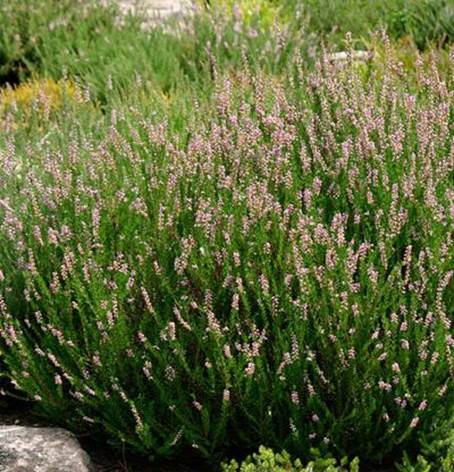
Scotch heather
'Spring Torch' gets its name
from the vibrant color of its new growth in spring. The
mid-green leaves are tipped in shades of cream, orange, and red. Later in the
summer, mauve-pink flower spikes cover the plant and last into the
fall. As cold weather sets in, leaves acquire bronze or purple tones,
adding further interest. This small, mounding evergreen shrub makes a good
groundcover or rock garden plant. Bees love it. Different cultivars are
beautiful woven together in the garden to form a colorful tapestry.